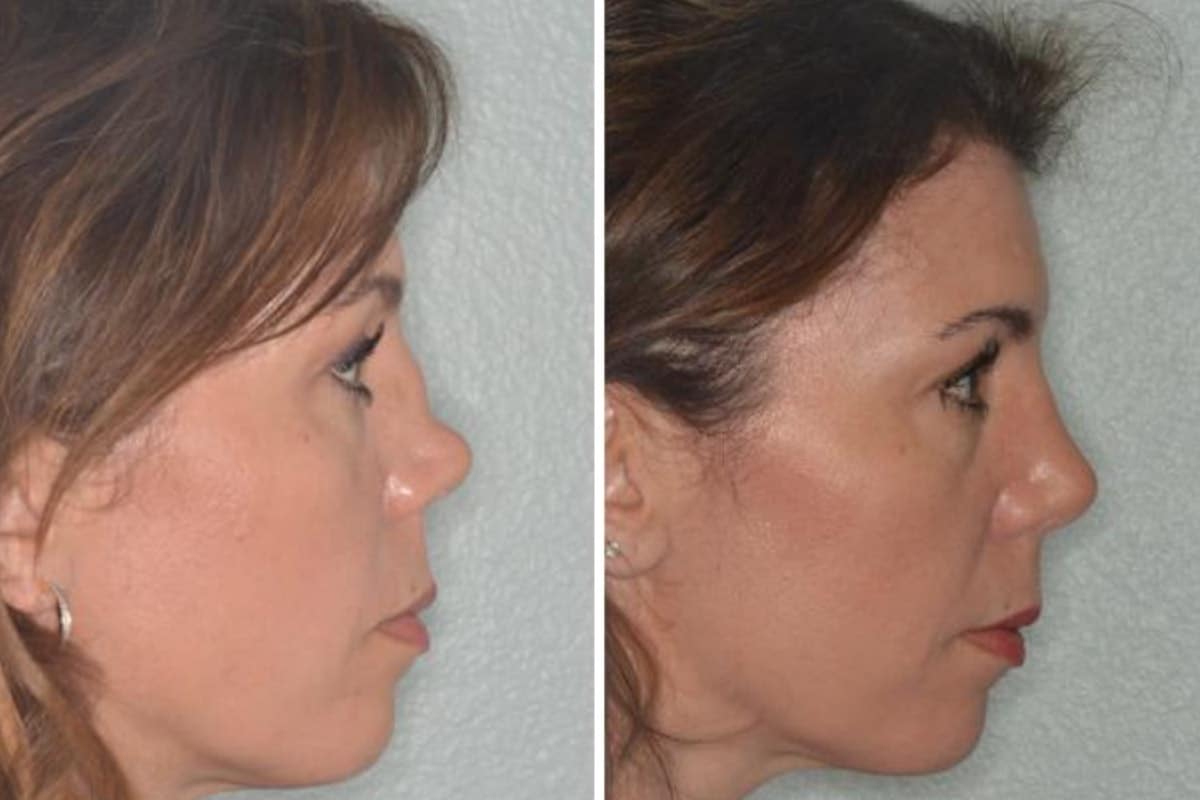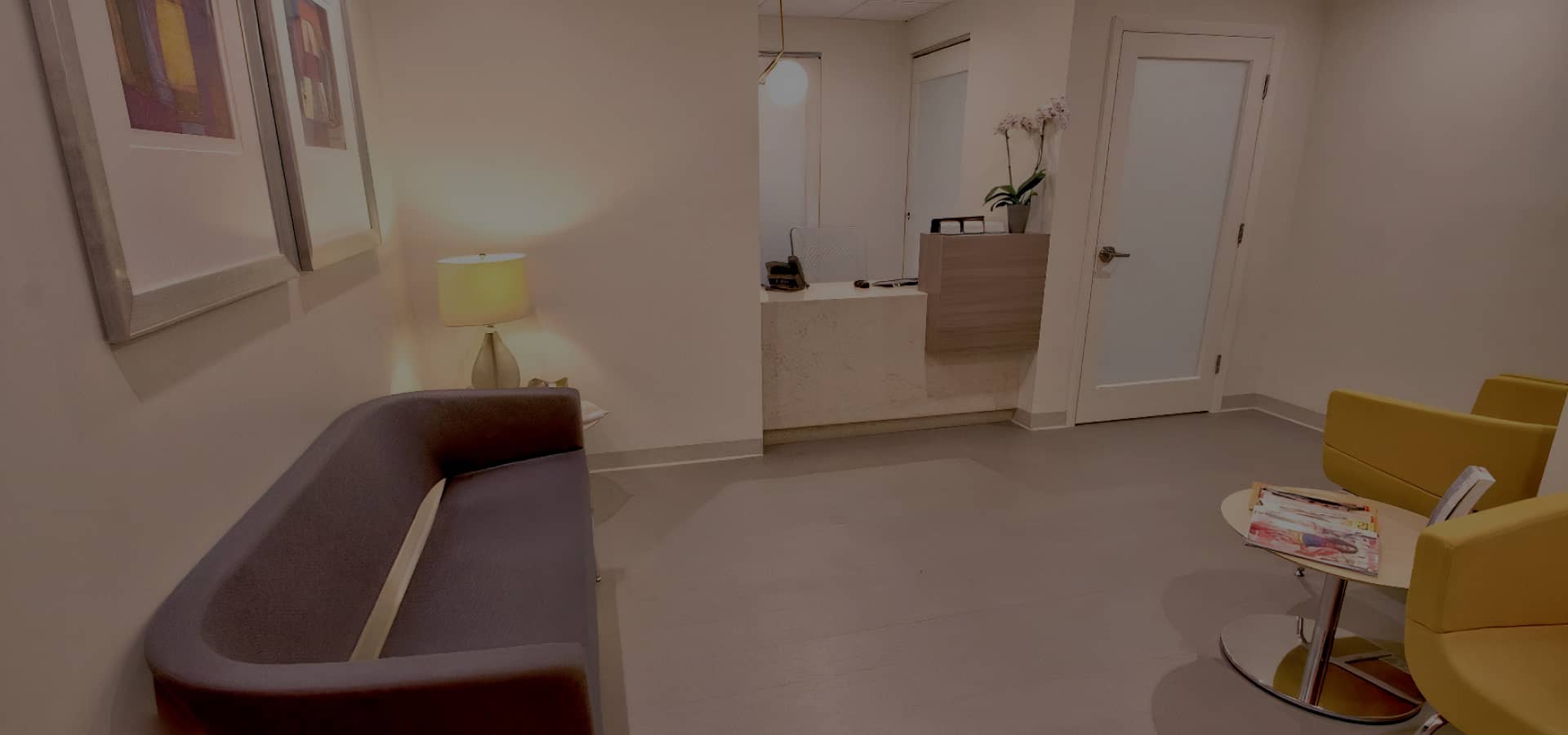Revision rhinoplasty is a complex facial plastic surgery procedure that aims to correct issues or improve the appearance or function of the nose following a primary rhinoplasty.
In some cases, the lateral cartilages of the nose might also need to be adjusted or reconstructed during revision rhinoplasty to ensure a balanced and harmonious appearance.
One solution to overcome these challenges is the use of rib cartilage in revision rhinoplasty, which provides a sturdy and versatile grafting material for reconstructing the nasal framework. In addition to rib cartilage, other types of autologous cartilage used in revision rhinoplasty include septal cartilage and ear cartilage. The selection of cartilage is based on the needs of the patient and the surgeon’s inclination.
In some cases, a columellar strut graft may be the graft of choice for providing additional support to the caudal septum and nasal spine. Thieme Medical Publishers and other sources highlight the importance of addressing functional issues in revision rhinoplasty surgery, such as problems with the nasal cavity or a crooked nose.
Considerations when Using Rib Cartilage for Revision Rhinoplasty
When planning a revision rhinoplasty with rib cartilage, several things need to be considered. Factors to consider include the accessibility of donor cartilage, the individual’s apprehensions regarding scarring and discomfort, and the possibility of cartilage distortion.
In some cases, septal cartilage or ear cartilage may not be available or sufficient for the revision surgery, making rib cartilage a suitable alternative. Patients tend to be concerned about scarring, pain, and cartilage warping, and it is important to address these concerns. Scarring can be minimized by making a small incision (3-4 cm) hidden within or below the breast crease, while pain from the rib cartilage graft is typically not more than with an ear graft. Also, the risk of cartilage warping can be minimized through specific surgical techniques.
It is important to note that while septal cartilage and ear cartilage are commonly used, there are cases where rib cartilage is the best option for revision surgery. For example, in secondary rhinoplasties, where the nasal septum has been previously used or is insufficient for the required grafting, rib cartilage may be the most suitable choice.
The use of autologous rib cartilage, auricular cartilage, or conchal cartilage is often preferred due to their lower rate of infection and better surgical outcomes compared to alloplastic materials. However, when autogenous cartilage is not available or sufficient, an experienced surgeon may consider using alloplastic implants.
The Advantages of Using Rib Cartilage in Revision Rhinoplasty
There are several advantages to using rib cartilage in revision rhinoplasty, including:
- Body’s own material: Rib cartilage is autologous, meaning it comes from the patient’s own body, eliminating the need for synthetic materials or foreign grafts.
- Reduced risk of infection: Since rib cartilage is the patient’s own tissue, it incorporates naturally into the nose. This reduces the risk of infection in comparison to synthetic materials.
- Sturdy and durable: Rib cartilage is strong and can be shaped into thin slices, making it an ideal material for reconstructing the nasal framework.
- Sufficient grafting material: Rib cartilage provides more graft material compared to ear cartilage or septal cartilage, allowing for more extensive revisions.
In comparison to other
graft materials, such as costal cartilage grafts or synthetic materials, rib cartilage grafts are more likely to incorporate smoothly into the nasal structure. This is because rib cartilage is autologous, meaning it comes from the patient’s own body, reducing the risk of complications such as infection. In Asian rhinoplasty and cases where patients require additional support, rib cartilage grafts can be used to enhance facial features and improve overall facial harmony.
Steps to Take When Preparing for Revision Rhinoplasty with Rib Cartilage
Before undergoing revision rhinoplasty with rib cartilage, patients should take the following steps:
- Consult with a qualified and experienced facial plastic surgeon who specializes in revision rhinoplasty procedures.
- Discuss the objectives and anticipated outcomes of the operation with the surgeon, such as employing rib cartilage and addressing any possible issues.
- Prepare for the surgery by following the surgeon’s pre-operative instructions, which may include quitting smoking, avoiding certain medications, and arranging for post-operative care.
- Be prepared for the recovery process, which may include taking time off work and avoiding strenuous activities for several weeks.
In the consultation, the facial plastic surgeon might also talk about utilizing alternative graft materials, like septal or ear cartilage in rhinoplasty, based on the patient’s requirements and the accessibility of donor cartilage. For som
e patients, such as those who have undergone previous rhinoplasty procedures or have significant scar tissue, the use of autologous rib cartilage or costal cartilage may be recommended for the best outcome.
Risks and Potential Complications Associated with Revision Rhinoplasty with Rib Cartilage
There are risks common among all surgical procedures that include infection, bleeding, scarring, and a reaction to the anesthesia. Nasal surgery might cause rib warping, nostril asymmetry, nasal obstruction, or unsatisfactory results. Some specific risks associated with rib cartilage rhinoplasty include cartilage warping and potential damage to the lateral cartilages or nasal bones. However, an experienced facial plastic surgeon will use advanced surgical techniques to minimize these risks and ensure a successful outcome. Dr. Bared is a highly trained, double-board certified plastic surgeon who prioritizes patient safety and his surgical technique will minimize risks and the potential for complications
The Procedure for Revision Rhinoplasty with Rib Cartilage
The surgical procedure for revision rhinoplasty with rib cartilage involves several steps, including harvesting the rib cartilage, preparing the graft material, and reconstructing the nasal framework. Initially, the surgeon creates a minor cut in the chest region to reach and extract a portion of rib cartilage. The cartilage is then carefully shaped and sculpted to create the necessary grafts for the revision surgery. Finally, the surgeon uses these grafts to rebuild the nasal structure, addressing any functional or cosmetic issues that were present after the initial rhinoplasty.
Results and Expectations for Revision Rhinoplasty with Rib Cartilage
Patients can expect significant improvements in both the appearance and function of their nose after undergoing revision rhinoplasty with rib cartilage. The use of rib cartilage allows for a more stable and durable nasal framework, which can help to correct issues such as nasal obstruction, deformity, or asymmetry. While the rib graft revision rhinoplasty results may take several months to become fully apparent, patients typically notice a marked improvement in their nasal appearance and function within weeks of the procedure. In the days after surgery, patients should be mindful of their healing process and report any concerns or unusual symptoms to their revision rhinoplasty surgeon. In some cases, rib cartilage grafts can be used to enhance facial features such as the nasal dorsum or to correct nasal deformities. This can result in improved facial harmony and increased patient satisfaction. Rib cartilage grafts can also be used to enhance facial features in Asian patients and female patients who may require additional support for the nasal dorsum or lateral cartilage.
Recovery and Aftercare for Revision Rhinoplasty with Rib Cartilage
The recovery process for revision rhinoplasty with rib cartilage is similar to that of a standard rhinoplasty. Patients may experience some swelling, bruising, and discomfort in the days following surgery, but these symptoms usually subside within one to two weeks. It is important to follow the surgeon’s post-operative instructions, which may include keeping the head elevated, avoiding strenuous activities, and refraining from blowing the nose for several weeks.
Patients should attend regular follow-up appointments with their surgeon to monitor the healing process and address any concerns. Many patients start to see the final results of their rhinoplasty within six months, but it might take up to a year for swelling to completely subside so that final results are fully apparent. The healing process relies on adequate blood circulation to the soft tissue surrounding the surgical area, which is essential for optimal recuperation and reducing scar tissue formation.
In the days after surgery, the patient should closely follow the surgeon’s post-operative instructions to promote proper healing of both the rib graft site and the nasal area. This may include avoiding strenuous activities and taking care of the soft tissue around the surgical site.
FAQs about Revision Rhinoplasty with Rib Cartilage
How long will the results of my revision rhinoplasty with rib cartilage last?
The results of a revision rhinoplasty with rib cartilage are generally long-lasting, as the rib cartilage grafts provide a strong and stable foundation for the nasal framework. While some minor changes may occur over time due to the natural aging process, patients can expect their improved nasal appearance and function to endure for many years following the procedure.
Is revision rhinoplasty with rib cartilage a safe procedure?
Yes, revision rhinoplasty with rib cartilage is considered a safe procedure when performed by an experienced facial plastic surgeon. As with any surgical procedure, there are inherent risks and potential complications, but these can be minimized through careful patient selection, proper surgical techniques, and diligent aftercare. It is important to discuss any concerns with Dr. Bared to ensure that you understand the risks and benefits of the procedure before moving forward.
Will I need more than one surgery for the best results from my revision rhinoplasty with rib cartilage?
While the goal of revision rhinoplasty with rib cartilage is to achieve the best possible results in a single procedure, some cases may require additional surgeries to fine-tune the results or address any unforeseen complications. Several factors, such as the intricacy of the primary rhinoplasty, the scope of necessary adjustments, and the unique healing response of the patient, determine the demand for additional surgical procedures. Dr. Bared will discuss the likelihood of additional procedures during your consultation and keep you informed throughout the recovery process. In the consultation, the facial plastic surgeon might also talk about employing different graft materials, like costal cartilage grafts or dorsal onlay grafts, based on the patient’s requirements and the accessibility of donor cartilage.
Is there any way to minimize scarring from a revision rhinoplasty with rib cartilage procedure?
Patients can expect significant improvements in both the appearance and function of their nose after undergoing revision rhinoplasty with rib cartilage. First, the incision to harvest the rib cartilage is typically small (3-4 cm) and strategically placed within or below the breast crease, making it less visible. Additionally, Dr. Bared may employ advanced techniques to minimize scarring on the nose, such as using internal incisions whenever possible. Finally, proper aftercare and following post-operative instructions can help to promote optimal healing and reduce the appearance of scars.
Dr. Anthony Bared interviews a female patient who he performed a rib revision rhinoplasty to improve the nose from previous procedures she had in the past.

Rib cartilage confers many advantages for the patient seeking a revision rhinoplasty. For one, it is your body’s own material. No foreign grafts are introduced into the nose. When a patient has a revision rhinoplasty, the blood supply into the nose is more limited than in a patient who has not had a previous procedure. This makes one more susceptible to risks like infections. Since rib cartilage is grafting material from one’s own body it incorporates naturally into the nose. Secondly, it is a very sturdy graft material that can be shaped into very thin slices, retaining its strength and durability. Ear cartilage, for one, does not have this intrinsic strength. Ideally cartilage from the septum is used as grafting material, but septal cartilage is often not available in revision cases. Its strength makes rib cartilage a very suitable graft material for complex revision cases. Lastly, rib cartilage provides a sufficient amount of grafting material often needed in revision cases—material from two ear grafts does not provide the same quantity of graft material.

